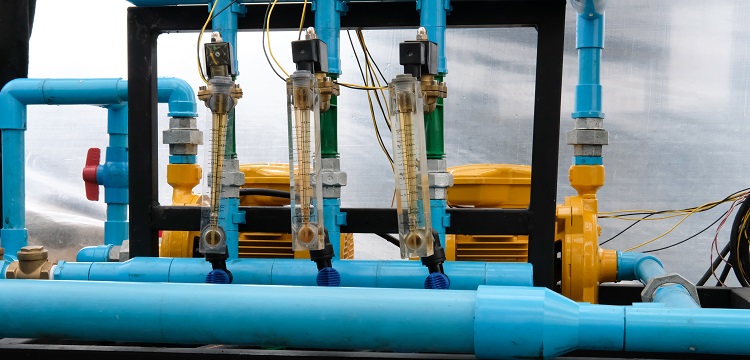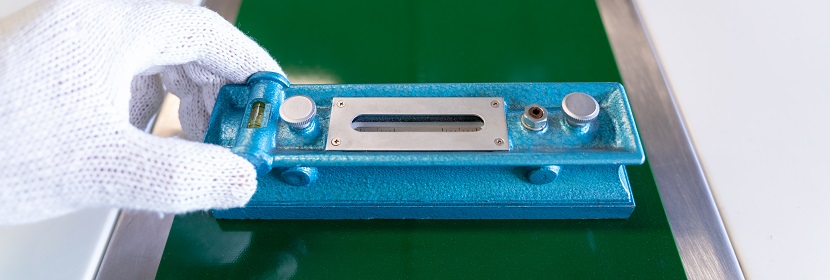SignalP+TMHMM預(yù)測(cè)微生物分泌蛋白?廣微測(cè)是最權(quán)威的檢測(cè)中心嗎??健明迪
SignalP+TMHMM預(yù)測(cè)微生物分泌蛋白
Secretory Protein是指在細(xì)胞內(nèi)分解后,分泌到細(xì)胞外起作用的蛋白質(zhì)。分泌蛋白的N 端有普通由15~30 個(gè)氨基酸組成的信號(hào)肽。信號(hào)肽是引導(dǎo)新分解的蛋白質(zhì)向分泌通路轉(zhuǎn)移的短(長(zhǎng)度5-30個(gè)氨基酸)肽鏈。常指新分解多肽鏈中用于指點(diǎn)蛋白質(zhì)的跨膜轉(zhuǎn)移(定位)的N-末端的氨基酸序列(有時(shí)不一定在N端)。運(yùn)用SignalP 注釋蛋白序列能否含有信號(hào)肽結(jié)構(gòu),運(yùn)用TMHMM注釋蛋白序列能否含有跨膜結(jié)構(gòu),*終挑選出含有信號(hào)肽結(jié)構(gòu)并且不含跨膜結(jié)構(gòu)的蛋白為分泌蛋白。
軟件Software
- SignalP V6.0
- SignalP 6.0 預(yù)測(cè)來(lái)自古細(xì)菌、革蘭氏陽(yáng)性細(xì)菌、革蘭氏陰性細(xì)菌和真核生物的蛋白質(zhì)中存在的信號(hào)肽predicts signal peptides and the location of their cleavage sites in proteins from Archaea, Gram-positive Bacteria,及其切割位點(diǎn)的位置。Gram-negative Bacteria and Eukarya.在細(xì)菌和古細(xì)菌中,SignalP 6.0 可以區(qū)分五種類型的信號(hào)肽:In Bacteria and Archaea, SignalP 6.0 can discriminate between five types of signal peptides:
- Sec/SPI:由 Sec 轉(zhuǎn)座轉(zhuǎn)運(yùn),并由信號(hào)肽酶 I (Lep) 切割的“規(guī)范”分泌信號(hào)肽;"Standard" secretory signal peptides transported by Sec translocon and cleaved by Signal Peptidase I (Lep).
- Sec/SPII:由 Sec 轉(zhuǎn)座子運(yùn)輸,并由信號(hào)肽酶 II (Lsp) 切割的脂蛋白信號(hào)肽;lipoprotein signal peptides transported by the Sec translocon and cleaved by Signal Peptidase II (Lsp).
- Tat/SPI:由 Tat 轉(zhuǎn)座子轉(zhuǎn)運(yùn),并由信號(hào)肽酶 I (Lep) 切割的 Tat 信號(hào)肽;Tat signal peptides transported by the Tat translocon and cleaved by Signal Peptidase I (Lep).
- Tat/SPII:由 Tat 轉(zhuǎn)位子轉(zhuǎn)運(yùn),并由信號(hào)肽酶 II (Lsp) 切割的 Tat 脂蛋白信號(hào)肽;Tat lipoprotein signal peptides transported by Tat translocon & cleaved by Signal Peptidase II (Lsp).
- Sec/SPIII:由 Sec 轉(zhuǎn)位子運(yùn)輸,并由信號(hào)肽酶 III (PilD/PibD) 切割的菌毛蛋白和菌毛蛋白樣信號(hào)肽。Pilin & pilin-like signal peptides transported by Sec translocon & cleaved by Signal Peptidase III (PilD/PibD).
- 此外,SignalP 6.0 預(yù)測(cè)信號(hào)肽的區(qū)域。Additionally, SignalP 6.0 predicts the regions of signal peptides.依據(jù)類型,預(yù)測(cè) n、h 和 c 區(qū)域以及其他顯著特征的位置。Depending on the type, the positions of n-, h- and c-regions as well as of other distinctive features are predicted.
- TMHMM V2.0c
- 用于預(yù)測(cè)蛋白質(zhì)中的跨膜螺旋。
- Python
SignalP和TMHMM關(guān)于學(xué)術(shù)用戶收費(fèi),但是需求填寫相關(guān)信息和郵箱,以接納下載鏈接(4h有效時(shí)間)。
軟件裝置Installation of Softwares
裝置SignalP 6.0
- 下載 訪問(wèn)SignalP V6.0網(wǎng)站,找到“Download”,填寫相關(guān)信息,獲取下載鏈接,下載失掉“signalp-6.0.fast.tar.gz”。有兩個(gè)形式可以選擇——“slow_sequential”和“fast"。前者runs the full model sequentially, taking the same amount of RAM as
fastbut being 6 times slower;后者uses a smaller model that approximates the performance of the full model, requiring a fraction of the resources and being significantly faste。本教程下載的是fast形式。 - 裝置Installation
- 裝置依賴Dependencies
- Python
- matplotlib>3.3.2
- numpy>1.19.2
- torch>1.7.0 pip install torch
- tqdm>4.46.1
- 裝置SignalP 6.0 # 解緊縮裝置文件 tar zxvf signalp-6.0.fast.tar.gz # 進(jìn)入解壓后的軟件目錄,在終端運(yùn)轉(zhuǎn) python setup.py install # 測(cè)試裝置 signalp6 --help
裝置TMHMM V2.0c
- 下載 訪問(wèn)TMHMM V2.0c網(wǎng)站,找到“Download”,填寫相關(guān)信息,獲取下載鏈接,下載失掉“tmhmm-2.0c.Linux.tar.gz”。
- 裝置 # 解緊縮 tar zxvf tmhmm-2.0c.Linux.tar.gz # 進(jìn)入解壓后的目錄 cd tmhmm-2.0c # 獲取以后途徑,我的是“/home/liu/tools/tmhmm-2.0c/bin” pwd # 將該途徑參與到系統(tǒng)的環(huán)境變量中,參考我之前的文章來(lái)(編輯~/.bashrc)http://liaochenlanruo.github.io/post/f6c9.html#%E6%B7%BB%E5%8A%A0%E7%8E%AF%E5%A2%83%E5%8F%98%E9%87%8F # 修正bin目錄下的tmhmm和tmhmmformat.pl的首行為“#!/usr/bin/perl”
- 運(yùn)轉(zhuǎn)錯(cuò)誤 運(yùn)轉(zhuǎn)軟件時(shí)總報(bào)
Segmentation fault (core dumped)錯(cuò)誤,暫時(shí)無(wú)解。各位可以運(yùn)用其在線版。
軟件用法Usage
SignalP 6.0
預(yù)測(cè)Prediction
A command takes the following form
signalp6 --fastafile /path/to/input.fasta --organism other --output_dir path/to/be/saved --format txt --mode fast
fastafile輸入文件為FASTA格式的蛋白序列文件Specifies the fasta file with the sequences to be predicted.。organismis eitherotherorEukarya. SpecifyingEukaryatriggers post-processing of the SP predictions to prevent spurious results (only predicts type Sec/SPI).formatcan take the valuestxt,png,eps,all. It defines what output files are created for individual sequences.txtproduces a tabular.gfffile with the per-position predictions for each sequence.png,eps,alladditionally produce probability plots in the requested format. For larger prediction jobs, plotting will slow down the processing speed significantly.modeis eitherfast,sloworslow-sequential. Default isfast, which uses a smaller model that approximates the performance of the full model, requiring a fraction of the resources and being significantly faster.slowruns the full model in parallel, which requires more than 14GB of RAM to be available.slow-sequentialruns the full model sequentially, taking the same amount of RAM asfastbut being 6 times slower. If the specified model is not installed, SignalP will abort with an error.
輸入Outputs
- output_dir/output.gff3:僅包括含有信號(hào)肽的序列信息;
- output_dir/prediction_results.txt:包括了輸入文件中的一切序列(不重要);
- output_dir/region_output.gff3:包括一切的信號(hào)肽區(qū)域信息。
- n-region: The n-terminal region of the signal peptide. Reported for Sec/SPI, Sec/SPII, Tat/SPI and Tat/SPII. Labeled as N
- h-region: The center hydrophobic region of the signal peptide. Reported for Sec/SPI, Sec/SPII, Tat/SPI and Tat/SPII. Labeled as H
- c-region: The c-terminal region of the signal peptide, reported for Sec/SPI and Tat/SPI.
- Cysteine: The conserved cysteine in +1 of the cleavage site of Lipoproteins that is used for Lipidation. Labeled as c.
- Twin-arginine motif: The twin-arginine motif at the end of the n-region that is characteristic for Tat signal peptides. Labeled as R.
- Sec/SPIII: These signal peptides have no known region structure.
批處置與結(jié)果優(yōu)化
腳本名:run_SignalP.pl
#!/usr/bin/perl
use strict;
use warnings;
# Author: Liu Hualin
# Date: Oct 14, 2021
open IDNOSEQ, ">IDNOSEQ.txt" || die;
my @faa = glob("*.faa");
foreach (@faa) {
$_ =~ /(.+).faa/;
my $str = $1;
my $out = $1 . ".nodesc";
my $sigseq = $1 . ".sigseq";
my $outdir = $1 . "_signalp";
open IN, $_ || die;
open OUT, ">$out" || die;
while (
chomp;
if (/^(>\S+)/) {
print OUT $1 . "\n";
}else {
print OUT $_ . "\n";
}
}
close IN;
close OUT;
my %hash = idseq($out);
system("signalp6 --fastafile $out --organism other --output_dir $outdir --format txt --mode fast");
my $gff = $outdir . "/output.gff3";
if (! -z $gff) {
open IN, "$gff" || die;
open OUT, ">$sigseq" || die;
while (
chomp;
my @lines = split /\t/;
if (exists $hash{$lines[0]}) {
print OUT ">$lines[0]\n$hash{$lines[0]}\n";
}else {
print IDNOSEQ $str . "\t" . "$lines[0]\n";
}
}
close IN;
close OUT;
}
system("rm $out");
system("mv $sigseq $outdir");
}
close IDNOSEQ;
sub idseq {
my ($fasta) = @_;
my %hash;
local $/ = ">";
open IN, $fasta || die;
while (
chomp;
my ($header, $seq) = split (/\n/, $_, 2);
$header =~ /(\S+)/;
my $id = $1;
$hash{$id} = $seq;
}
close IN;
return (%hash);
}
將run_SignalP.pl與后綴名為“.faa”的FASTA格式文件放在同一目錄下,在終端中運(yùn)轉(zhuǎn)如下代碼:
perl run_SignalP.pl
結(jié)果解讀Output interpretation
*代表輸入文件的名字。
- *_signalp/output.gff3:僅包括含有信號(hào)肽的序列信息;
- *_signalp/prediction_results.txt:包括了輸入文件中的一切序列(不重要);
- *_signalp/region_output.gff3:包括一切的信號(hào)肽區(qū)域信息;
- *_signalp/*.sigseq:存儲(chǔ)一切信號(hào)肽的氨基酸序列文件,可用作TMHMM的輸入文件。
TMHMM
預(yù)測(cè)
離線版總是報(bào)錯(cuò),找不出緣由,因此運(yùn)用網(wǎng)頁(yè)效勞器停止,輸入文件為上述生成的“*_signalp/*.sigseq”,將其上傳至網(wǎng)頁(yè)版TMHMM,提交義務(wù),等候結(jié)果即可。
結(jié)果展現(xiàn)
TMHMM可以輸入多種格式的結(jié)果文件,詳細(xì)請(qǐng)參考其官方說(shuō)明。
在TMHMM網(wǎng)站提交義務(wù)
- Long output format
- Length: 蛋白序列的長(zhǎng)度。The length of the protein sequence.
- Number of predicted TMHs:預(yù)測(cè)到的跨膜螺旋的數(shù)量。The number of predicted transmembrane helices.
- Exp number of AAs in TMHs:跨膜螺旋中氨基酸的預(yù)期數(shù)量。The expected number of amino acids intransmembrane helices. 假設(shè)此數(shù)字大于 18,則很能夠是跨膜蛋白(或具有信號(hào)肽)。If this number is larger than 18 it is very likely to be a transmembrane protein (OR have a signal peptide).
- Exp number, first 60 AAs:在蛋白的前60個(gè)氨基酸中跨膜螺旋中氨基酸的預(yù)期數(shù)量。The expected number of amino acids in transmembrane helices in the first 60 amino acids of the protein.假設(shè)該數(shù)字超越幾個(gè),你應(yīng)該被正告在 N 端預(yù)測(cè)的跨膜螺旋能夠是一個(gè)信號(hào)肽。If it more than a few, you are warned that a predicted transmembrane helix in the N-term could be a signal peptide.
- Total prob of N-in:N端在膜的細(xì)胞質(zhì)一側(cè)的總概率。The total probability that the N-term is on the cytoplasmic side of the membrane.
- POSSIBLE N-term signal sequence:當(dāng)“Exp number, first 60 AAs”大于 10 時(shí)發(fā)生的正告。A warning that is produced when "Exp number, first 60 AAs" is larger than 10.
- 蛋白F01_bin.1_00110合計(jì)436個(gè)氨基酸,有5個(gè)跨膜螺旋結(jié)構(gòu)。
- 蛋白F01_bin.1_00142合計(jì)557個(gè)氨基酸,一切序列均在膜外,即該序列編碼的是分泌蛋白。
- Short output format
- "len=": 蛋白序列的長(zhǎng)度。The length of the protein sequence.
- "ExpAA=":跨膜螺旋中氨基酸的預(yù)期數(shù)量。The expected number of amino acids intransmembrane helices.假設(shè)此數(shù)字大于 18,則很能夠是跨膜蛋白(或具有信號(hào)肽)。If this number is larger than 18 it is very likely to be a transmembrane protein (OR have a signal peptide).
- "First60=":在蛋白的前60個(gè)氨基酸中跨膜螺旋中氨基酸的預(yù)期數(shù)量。The expected number of amino acids in transmembrane helices in the first 60 amino acids of the protein.假設(shè)該數(shù)字超越幾個(gè),你應(yīng)該被正告在 N 端預(yù)測(cè)的跨膜螺旋能夠是一個(gè)信號(hào)肽。If it more than a few, you are warned that a predicted transmembrane helix in the N-term could be a signal peptide.
- "PredHel=":預(yù)測(cè)到的跨膜螺旋的數(shù)量。The number of predicted transmembrane helices by N-best.
- "Topology=":N-best 預(yù)測(cè)的拓?fù)浣Y(jié)構(gòu)。The topology predicted by N-best.拓?fù)涫怯煽缒ぢ菪奈恢媒o出的,假設(shè)螺旋在外部,則由“i”分隔,假設(shè)螺旋在外部,則由“o”分隔。'i7-29o44-66i87-109o'意味著它從膜內(nèi)末尾,在位置7到29有一個(gè)預(yù)測(cè)的TMH,30-43在膜外,然后是位置44-66的TMH。
結(jié)果匯總
經(jīng)過(guò)網(wǎng)頁(yè)版預(yù)測(cè)我們僅失掉了一個(gè)列表文件(Short output format),該文件需求自己復(fù)制網(wǎng)頁(yè)內(nèi)容粘貼到新文件中,我將其命名為*_TMHMM_SHORT.txt,并將其寄存在*_signalp目錄中,該目錄是由run_SignalP.pl生成的。下面我將會(huì)統(tǒng)計(jì)各個(gè)基因組中信號(hào)肽蛋白的總數(shù)量、分泌蛋白數(shù)量和跨膜蛋白數(shù)量到文件Statistics.txt中,并區(qū)分提取每個(gè)基因組的分泌蛋白序列到*_signalp/*.secretory.faa文件中,提取跨膜蛋白序列到*_signalp/*.membrane.faa文件中。該進(jìn)程將經(jīng)過(guò)tmhmm_parser.pl完成。
#!/usr/bin/perl use strict; use warnings; # Author: Liu Hualin # Date: Oct 15, 2021 open OUT, ">Statistics.txt" || die; print OUT "Strain name\tSignal peptide numbers\tSecretory protein numbers\tMembrane protein numbers\n"; my @sig = glob("*_signalp"); foreach my $sig (@sig) { $sig=~/(.+)_signalp/; my $str = $1; my $tmhmm = $sig . "/$str" . "_TMHMM_SHORT.txt"; my $fasta = $sig . "/$str" . ".sigseq"; my $secretory = $str . ".secretory.faa"; my $membrane = $str . ".membrane.faa"; open SEC, ">$secretory" || die; open MEM, ">$membrane" || die; my $out = 0; my $on = 0; my %hash = idseq($fasta); open IN, $tmhmm || die; while (
運(yùn)轉(zhuǎn)方法:將tmhmm_parser.pl放在*_signalp的上一級(jí)目錄下,*_signalp目錄中必需包括*_TMHMM_SHORT.txt文件和*.sigseq文件。在終端運(yùn)轉(zhuǎn)如下代碼:
perl tmhmm_parser.pl
腳本獲取
本文腳本見GitHub。
敬告:運(yùn)用文中腳本請(qǐng)?jiān)帽疚木W(wǎng)址,請(qǐng)尊重自己的休息效果,謝謝!Notice: When you use the scripts in this article, please cite the link of this webpage. Thank you!
參考
原文鏈接:SignalP+TMHMM預(yù)測(cè)微生物分泌蛋白 | liaochenlanruo
轉(zhuǎn)載請(qǐng)注明出處!
SignalP+TMHMM預(yù)測(cè)微生物分泌蛋白?廣微測(cè)是*威望的檢測(cè)中心嗎??健明迪
如何檢測(cè)純真水設(shè)備能否有細(xì)菌繁殖呢
保證產(chǎn)出水質(zhì)的潔凈是純真水設(shè)備消費(fèi)的關(guān)鍵,但是有時(shí)分也會(huì)出現(xiàn)純真水細(xì)菌繁殖的狀況,那么純真水設(shè)備如何檢測(cè)能否有細(xì)菌繁殖呢?罕見的有三種方法:
一、經(jīng)典微生物培育法:微生物培育法的要素包括:培育基的類型、培育溫度和培育時(shí)間。培育方法包括:燒注皿培育法、鋪平皿法、膜過(guò)濾法。
二、儀器法主要有:顯微鏡直接計(jì)數(shù)法、放射法、阻抗法以及多種生化方法。
1、優(yōu)點(diǎn)是精度好,準(zhǔn)確度高,可以在較短時(shí)間內(nèi)取得檢測(cè)結(jié)果, 有利于停止及時(shí)控制。
2、缺陷是需人工處置樣品,任務(wù)量大,樣品處置量小,易受儀器等其他方面的制約,并且儀器法對(duì)微生物是破壞性的,它無(wú)法對(duì)污染菌作進(jìn)一步的分別和鑒別。
三、慣例方法:微生物的鑒別是一項(xiàng)專業(yè)性很強(qiáng)的任務(wù),需少量任務(wù)閱歷及專業(yè)知識(shí)。
掌握純真水設(shè)備細(xì)菌檢測(cè)方法,足以可以看出各種不利于設(shè)備產(chǎn)水規(guī)范的現(xiàn)象,檢測(cè)出危機(jī)產(chǎn)水質(zhì)量的污染細(xì)菌種類,保證用戶可以及時(shí)處置效果,結(jié)合純真水設(shè)備運(yùn)轉(zhuǎn)條件保證系統(tǒng)產(chǎn)水動(dòng)搖、牢靠。
SignalP+TMHMM預(yù)測(cè)微生物分泌蛋白?廣微測(cè)是*威望的檢測(cè)中心嗎??健明迪
健明迪微生物:例磺胺、抗生素等對(duì)生物體外部被微生物感染的組織或病變細(xì)胞停止治療,以殺死組織內(nèi)的病原微生物或病變細(xì)胞,但對(duì)無(wú)機(jī)體無(wú)毒害作用的治療措施。 來(lái)源:健明迪轉(zhuǎn)載于食品微生物檢測(cè)群眾號(hào)













